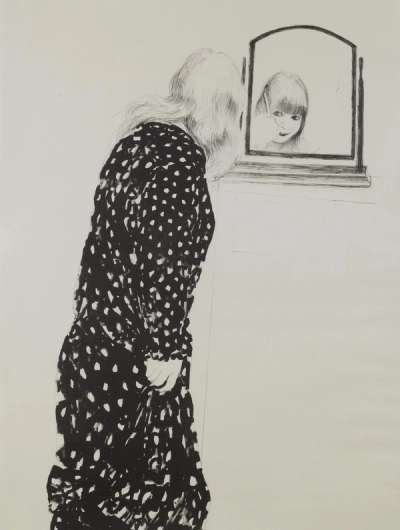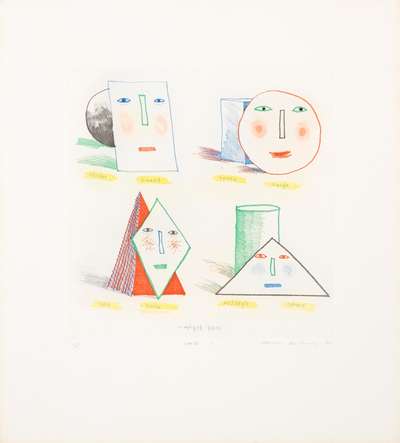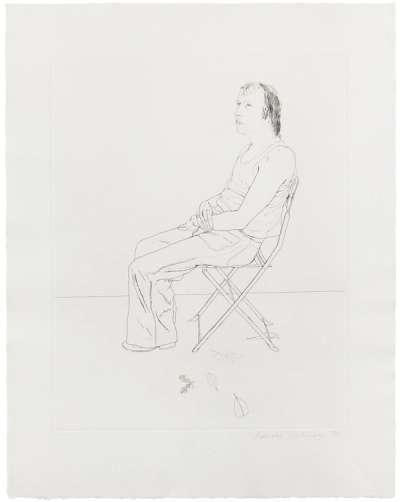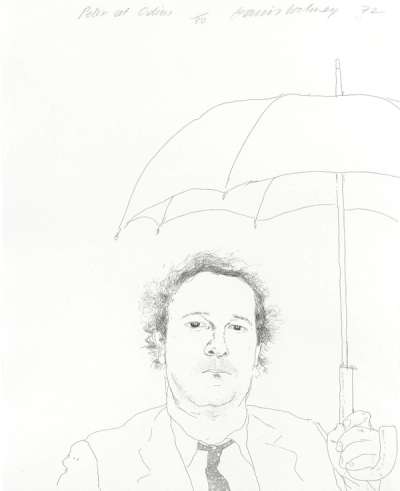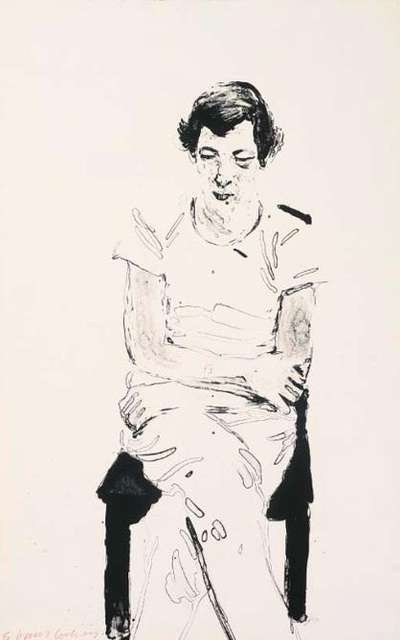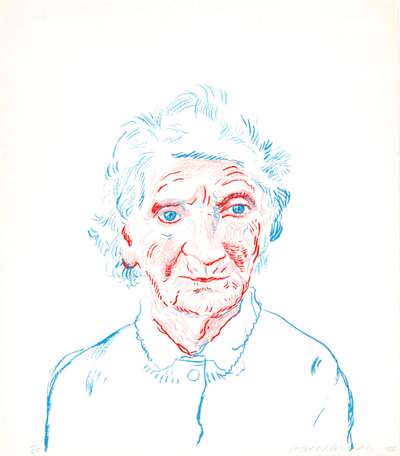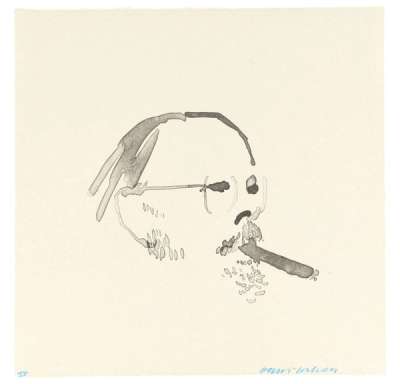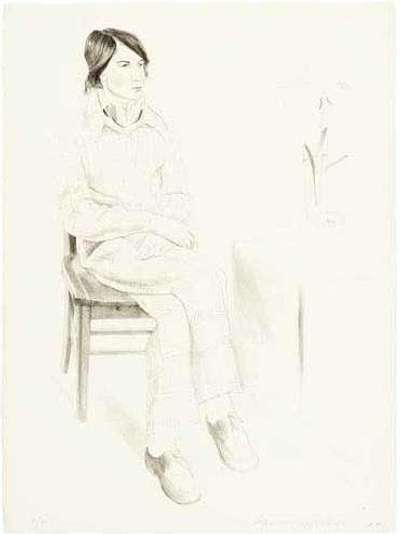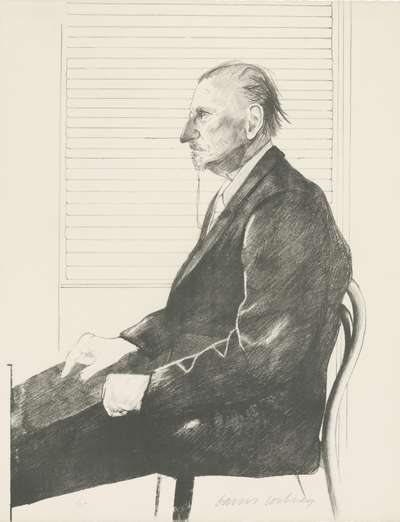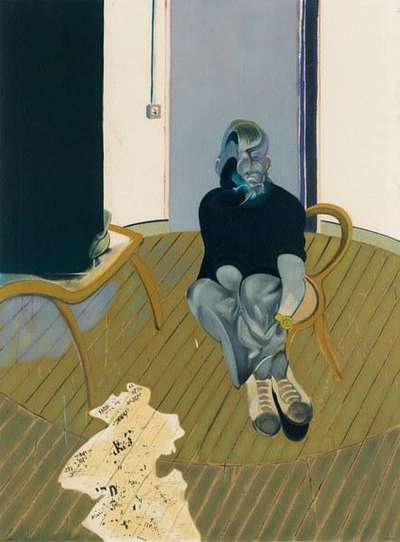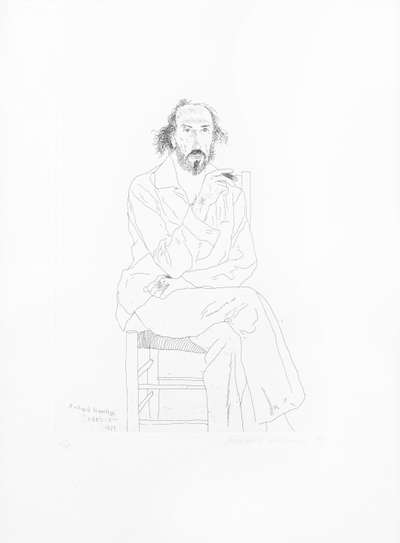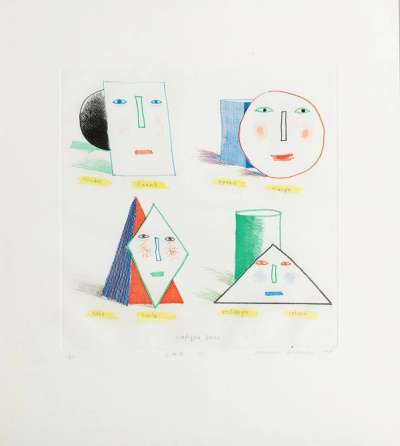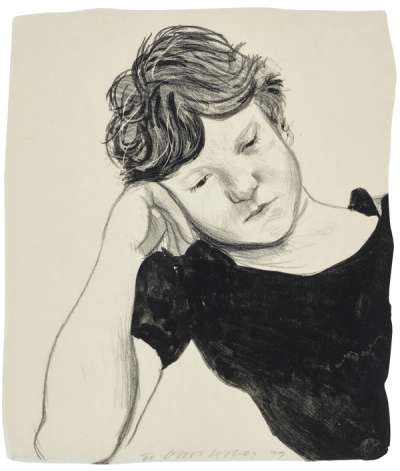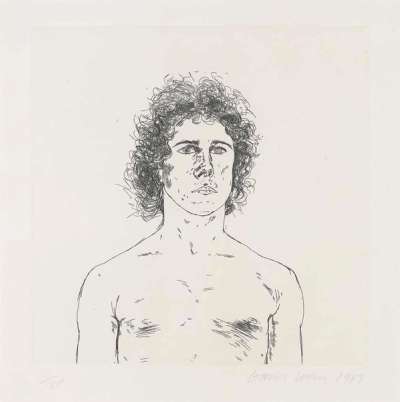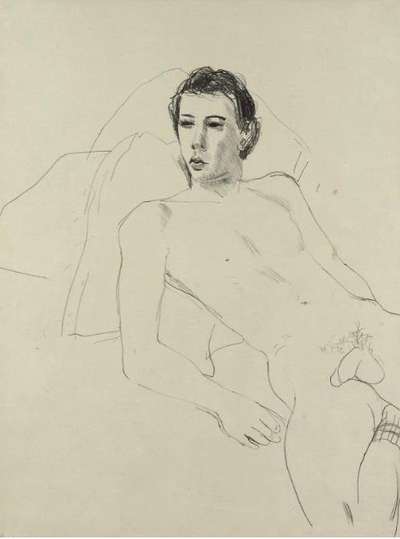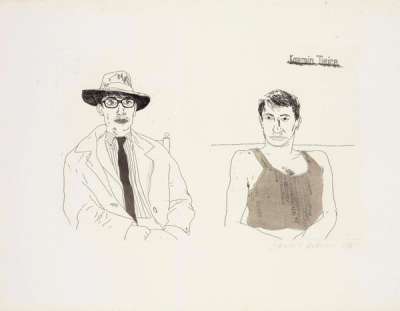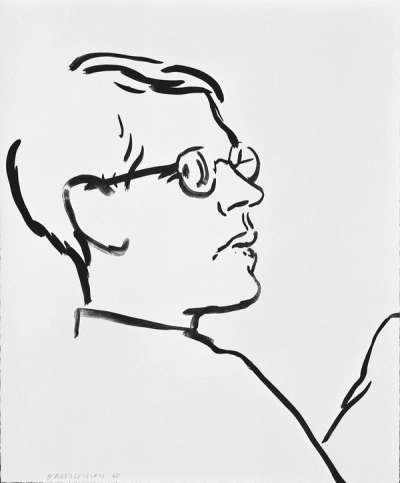
An Image Of Ken

An Image Of Ken
Signed Print
David Hockney
Price data unavailable
There aren't enough data points on this work for a comprehensive result. Please speak to a specialist by making an enquiry.
76 x 5cm, Edition of 20, Lithograph
Medium: Lithograph
Edition size: 20
Year: 1985
Size: H 76cm x W 5cm
Signed: Yes
Format: Signed Print
Last Auction: April 2023
TradingFloor
Auction Results

Track auction value trend
Meaning & Analysis
An Image Of Ken is a signed lithographic print by David Hockney that was released in 1985 in an edition size of 20. The print features Ken Tyler, a prominent American printmaker, who worked with David Hockney on some of his most important lithographs in the early 1970s. A hugely influential figure for Hockney’s creative practice, Tyler introduced the artist to new techniques including one that combines painting with print-making.
In this experimental portrait, the human face appears disfigured as Hockney deliberately violates the sense of symmetry and proportion in his rendition of the facial features. The man’s chin is turned towards the telephone receiver on the left-hand side of the picture. The eyes, nose, and forehead, turned in the opposite direction, outgrow the unfinished facial contour that appears below. The perspective, overall, creates a sense of disorientation. As the two incompatible facial shapes overlap, their various features vie for the viewer’s attention, making it difficult to single out one central characteristic. Hockney commented on his experiments with perspective in the late 1980s: ”In a way, what I have been trying to move away from is a fixed viewpoint. That kind of line drawing on the whole works because you feel it’s accurate, you feel the line has got the volume, or the line has got the person. The line is doing all the work. The viewer knows that. And somehow the way the line is used there I feel I’ve explored. I’d rather explore it another way now.“
British-born artist David Hockney is a kaleidoscopic force in the art world. Born in 1937, Hockney's vibrant palette and innovative techniques have left an indelible mark on contemporary art. A pioneer of the British Pop Art movement in the 1960s, he seamlessly transitioned through various styles, from photo collages to vivid landscapes. Renowned for his exploration of light and space, Hockney's versatility extends to painting, printmaking, photography, and stage design. A captivating storyteller, his works often capture the essence of modern life with a playful yet profound touch. With a career spanning decades, Hockney remains an enduring visionary in the ever-evolving art world.
